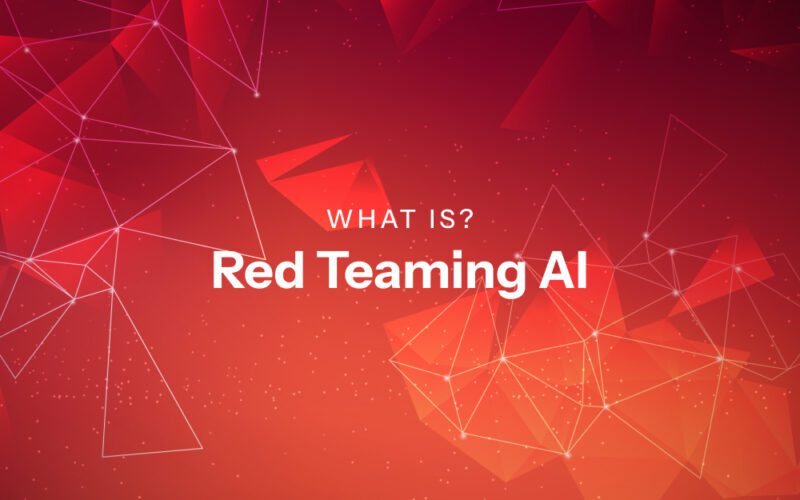Artificial intelligence is shaping everything—from national security to everyday apps. But behind the flashy headlines about AI breakthroughs lies a critical, less talked about process: AI red-teaming.
Recently, a quietly published NIST (National Institute of Standards and Technology) report highlighted serious lessons about how AI models can fail under pressure. These insights are not just for researchers—they’re essential for businesses, developers, and anyone deploying AI systems in 2025.
What is AI Red-Teaming?
Red-teaming is the process of stress-testing AI systems by simulating real-world attacks and adversarial scenarios. Think of it as a cybersecurity penetration test, but for machine learning models.
Instead of checking firewalls or passwords, red teams probe:
- Bias exploitation (e.g., tricking an AI into producing discriminatory outputs)
- Prompt injection attacks (feeding carefully crafted instructions to override safety filters)
- Data poisoning (injecting malicious data during training)
- Model theft (reverse engineering the AI system)
The NIST report emphasized that AI vulnerabilities are systemic, not just bugs—and must be addressed with structured frameworks.
Key Takeaways from the Hidden NIST Report
While the report wasn’t widely publicized, here are the core lessons:
- Adversarial Testing is Mandatory – AI can’t be trusted out-of-the-box. Even models with advanced safeguards can be manipulated. NIST recommends integrating red-teaming into every deployment phase, from training to real-world use.
- Bias Exploits are More Dangerous Than Expected – Attackers don’t always need technical exploits. The report revealed that simply framing questions in specific ways can make AI systems reveal hidden biases or unsafe content.
- Contextual Attacks are Rising – AI models fail in subtle contexts—for example, giving safe responses in English but unsafe ones in another language. Red teams must test cross-lingual and cultural scenarios.
- Continuous Testing is the New Normal – AI is not static. As models update, vulnerabilities shift. One-time red-teaming isn’t enough—continuous evaluation pipelines are necessary.
- Human-AI Collaboration is Critical – Red teams need diverse backgrounds—cybersecurity experts, linguists, psychologists—to catch issues technical testers may miss. NIST stresses that AI security isn’t just technical—it’s social and ethical.
Why This Matters for Businesses in 2025
Companies rolling out AI products face regulatory, reputational, and security risks if they ignore red-teaming.
- Regulatory compliance: Expect stricter rules around AI safety testing (US, EU, Asia all moving fast).
- Brand protection: AI errors spread instantly online—one unsafe response can trigger PR disasters.
- Cyber resilience: Adversaries are already experimenting with AI exploit techniques.
By adopting NIST-inspired frameworks, businesses can stay ahead of attackers and regulators alike.
How to Apply Red-Teaming in Practice
You don’t need a government lab to start. Here’s a practical roadmap:
- Define Attack Surfaces – Map out where your AI can be attacked: prompts, APIs, training data, model outputs.
- Simulate Attacks – Create test cases for bias, prompt injection, data poisoning, and adversarial examples.
- Automate Testing – Use red-teaming tools (open-source frameworks now exist) to run continuous adversarial checks.
- Document & Fix – Log vulnerabilities, patch weaknesses, and share learnings across teams.
- Build Feedback Loops – Integrate red-teaming results into regular model updates and compliance audits.
Red-Teaming Beyond Tech: Ethical Safeguards
The NIST report also warns that AI red-teaming is not just about breaking things. It’s about making AI safe, fair, and transparent.
- Bias audits: Prevent discriminatory outcomes.
- Transparency reports: Show users what’s tested and how issues are fixed.
- Cross-industry collaboration: Share attack patterns, much like cybersecurity communities do.
The Bottom Line
The hidden NIST findings confirm what security experts already feared: AI can’t secure itself. Without structured red-teaming, organizations risk unleashing unpredictable, unsafe systems.
In 2025, AI red-teaming is not optional—it’s an essential safeguard. The companies that embrace it now will not only protect themselves but also build trust with users, regulators, and society.
If you’re building or deploying AI, the time to start red-teaming isn’t tomorrow. It’s today.









